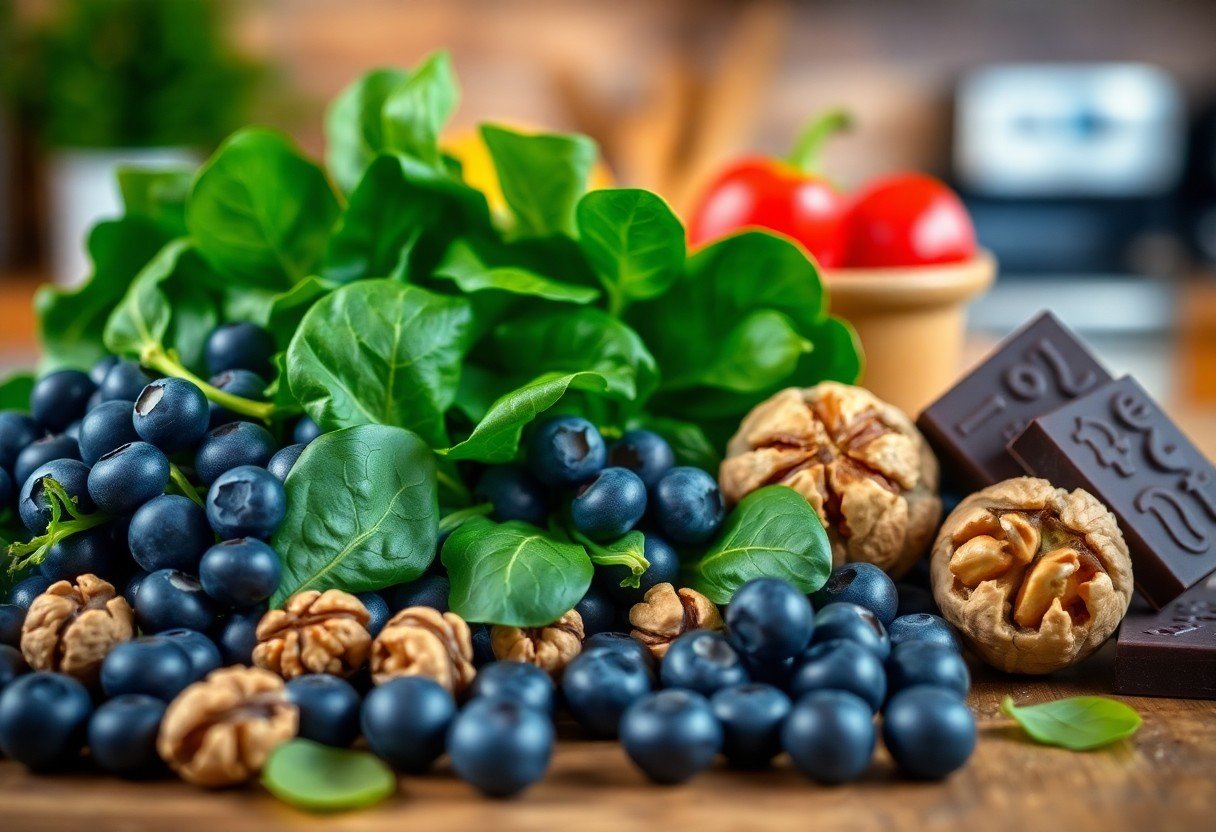As you consider a healthier lifestyle, reducing inflammation becomes a key goal. You can achieve this by planning your meals carefully. With a well-structured weekly menu, you can avoid inflammatory foods and focus on nourishing your body. By doing so, you will improve your overall well-being and lower your risk of chronic diseases. This template will guide you in creating a personalized anti-inflammatory meal plan, helping you make informed food choices that cater to your specific needs and preferences.
Key Takeaways:
- The Foundation of an anti-inflammatory weekly menu should include a variety of Whole Foods, such as fruits, vegetables, whole grains, and lean proteins to help Reduce Inflammation.
- Understanding the Glycemic Index and Omega-3 fatty acid content of foods can help in planning a menu that Minimizes Inflammation and Maximizes Nutrition.
- Hydration plays a significant role in an anti-inflammatory diet, and including Herbal Teas and Filtered Water can help support overall health and Wellness.
- A well-planned anti-inflammatory menu should Limit or Avoid pro-inflammatory foods, such as Processed Foods, Refined Sugars, and Saturated Fats that can Exacerbate Inflammation.
- Mindful Eating and Portion Control are also key components of an effective anti-inflammatory diet, helping to Regulate calorie intake and Support overall health and Wellbeing.
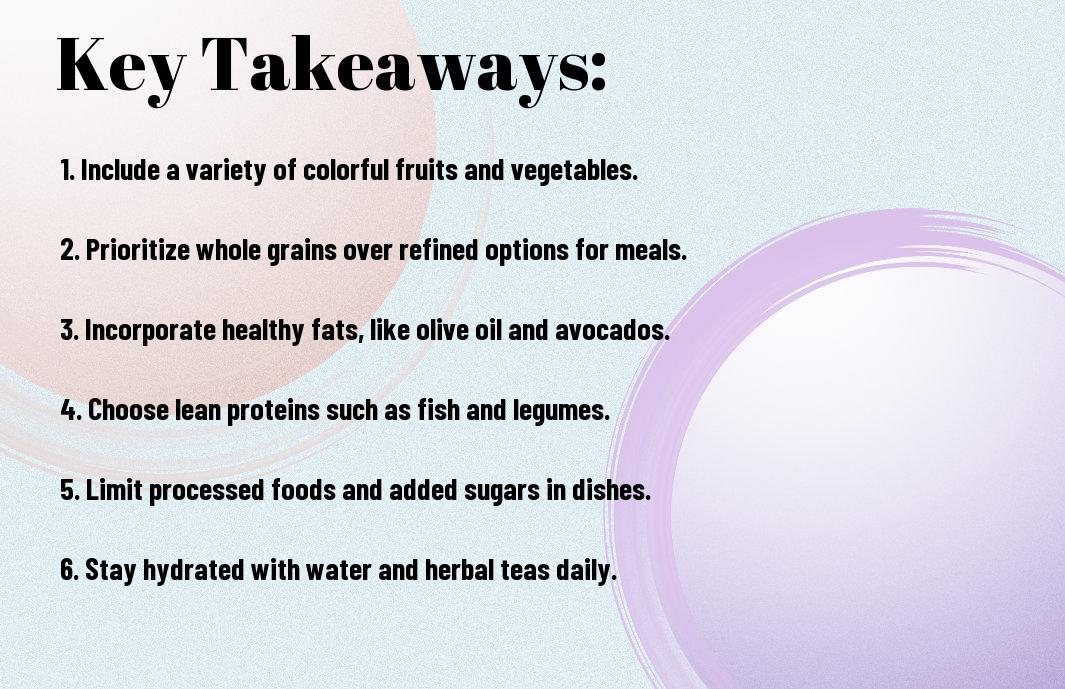
Benefits of an Anti-Inflammatory Diet
Your body will thank you for adopting an anti-inflammatory diet, as it can have a significant impact on your overall well-being. By reducing inflammation, you can alleviate symptoms associated with various health conditions and improve your quality of life.
Reducing Chronic Pain
Among the many benefits of an anti-inflammatory diet, reducing chronic pain is one of the most significant advantages. As you incorporate anti-inflammatory foods into your diet, you may notice a decrease in pain and discomfort, allowing you to live a more active and fulfilling life.
Improving Overall Health
Chronic inflammation can have devastating effects on your body, but an anti-inflammatory diet can help mitigate these effects. You can boost your immune system and reduce your risk of developing certain diseases by making informed food choices.
The benefits of an anti-inflammatory diet extend far beyond reducing chronic pain and improving overall health. As you continue on this journey, you may notice increased energy levels, improved mental clarity, and a stronger sense of well-being. By making sustainable lifestyle changes, you can take control of your health and unlock a healthier, happier you.
Key Foods to Include
If you want to reduce inflammation, you should focus on consuming foods that have anti-inflammatory properties. Your diet should be rich in nutrients, fiber, and antioxidants to help your body function properly.
Fresh Fruits and Vegetables
Including a variety of colorful fruits and vegetables in your diet will provide you with vital vitamins, minerals, and antioxidants that help reduce inflammation and promote overall health.
Whole Grains and Legumes
To maximize the benefits of your anti-inflammatory diet, you should focus on consuming whole grains and legumes that are high in fiber and protein, which will help you feel full and satisfied.
Legumes, such as lentils and chickpeas, are rich in polyphenols and antioxidants that have been shown to have powerful anti-inflammatory effects on the body, which can help you reduce your risk of chronic diseases, such as heart disease and diabetes. You can incorporate them into your meals in a variety of ways, including soups, stews, and salads, to boost the nutritional value of your diet and support your overall health.
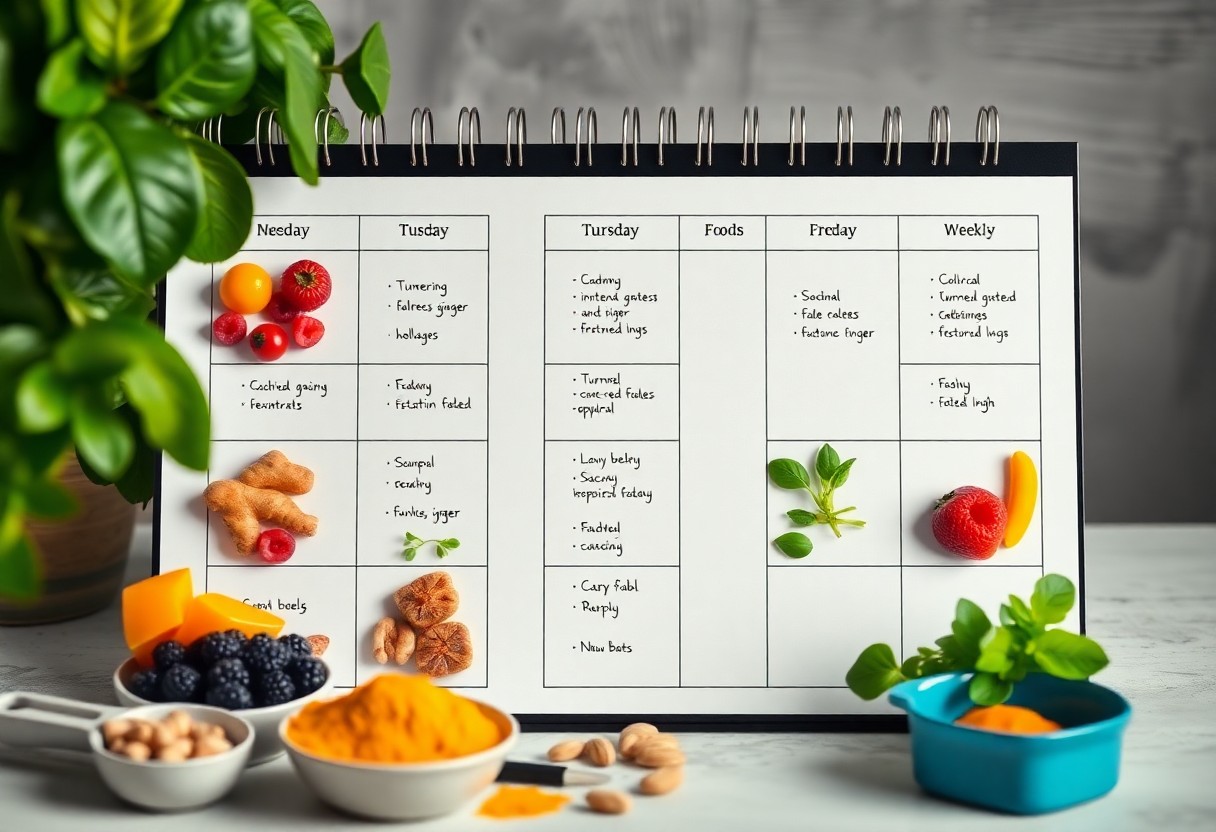
Foods to Avoid
Keep in mind that certain foods can trigger inflammation in your body. You can find more information about anti-inflammatory diets in the Anti-Inflammatory 3-Day Meal Plan guide.
Processed and Sugary Foods
Avoid foods high in sugar and unhealthy fats, as they can cause chronic inflammation in your body, leading to various health issues.
Dairy and Gluten Products
Sweet treats like dairy and gluten products can be highly inflammatory and should be consumed in moderation or avoided altogether.
Processed dairy and gluten products can be particularly harmful to your health, as they can cause severe inflammation and digestive issues. You should be aware of the potential risks associated with consuming these products and try to limit your intake or opt for healthier alternatives.
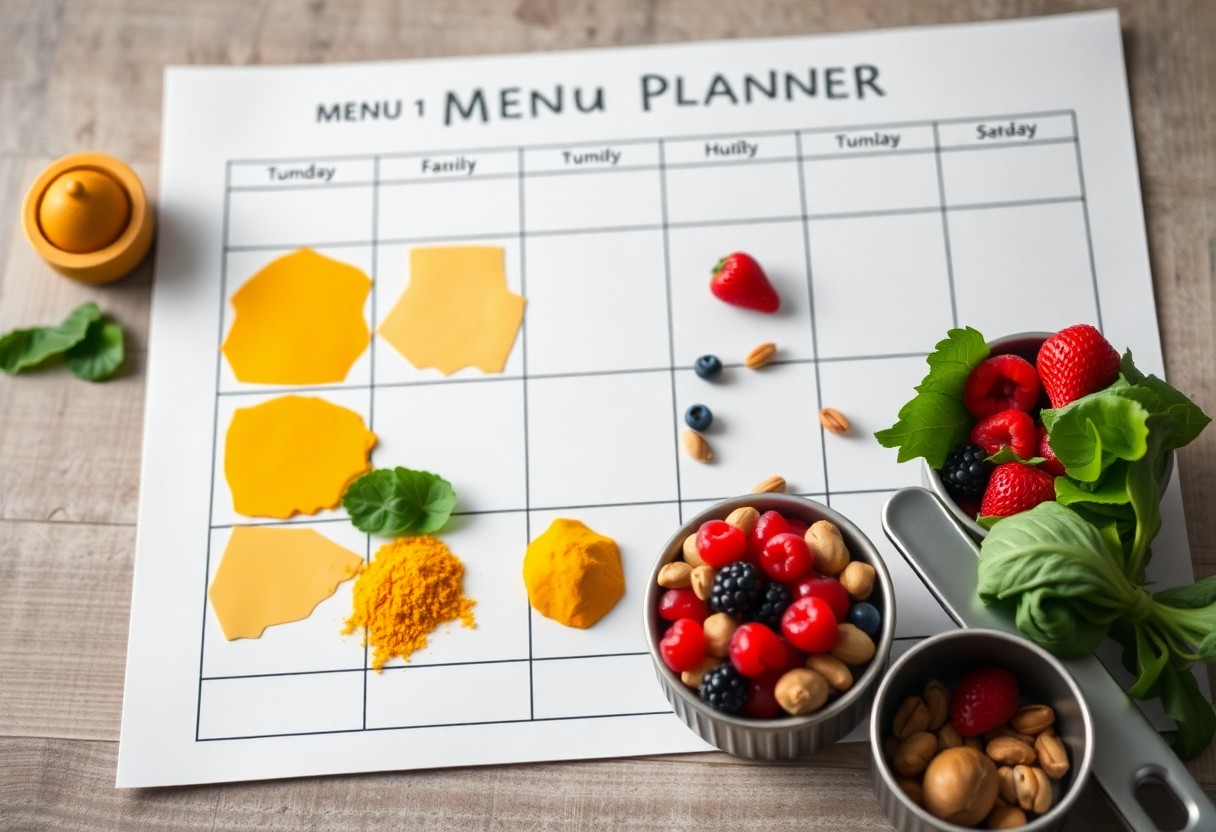
Sample Meal Plan
Once again, you can simplify your meal planning with an Anti inflammatory Meal & Recipe Planner, which will help you create a personalized plan. You’ll find various options to suit your needs.
Breakfast Options
For a healthy start, you’ll find delicious and nutritious breakfast ideas that will help you begin your day on a positive note. You can choose from a variety of wholesome options that are easy to prepare.
Lunch and Dinner Ideas
Options for lunch and dinner are abundant and varied, ensuring you’ll never get bored with your meals. You can explore different cuisines and cooking methods to find what works best for you.
Dinner is a great opportunity to get creative with your cooking and try out new flavorful recipes. As you plan your meals, keep in mind that inflammation-reducing foods like omega-3 rich fish, antioxidant-packed vegetables, and whole grains should be a priority in your diet to help you achieve your health goals and maintain a balanced lifestyle, avoiding harmful ingredients that can trigger negative reactions in your body.
Tips for Meal Preparation
Now, to streamline your meal prep, consider the following:
- Plan your meals in advance
You can find inspiration for your anti-inflammatory diet in a 7-Day Anti-Inflammatory Meal Plan. The key to success lies in your ability to stick to your plan.
Planning Ahead
Tactics for planning ahead include setting a schedule and creating a shopping list to ensure you have all the necessary ingredients for your meals.
Shopping Smart
To make the most of your grocery shopping, you should choose whole foods and avoid processed foods.
Shopping for the right ingredients is a positive step towards a healthy diet, and you should be aware of hidden dangers such as added sugars and artificial additives that can negatively impact your health.
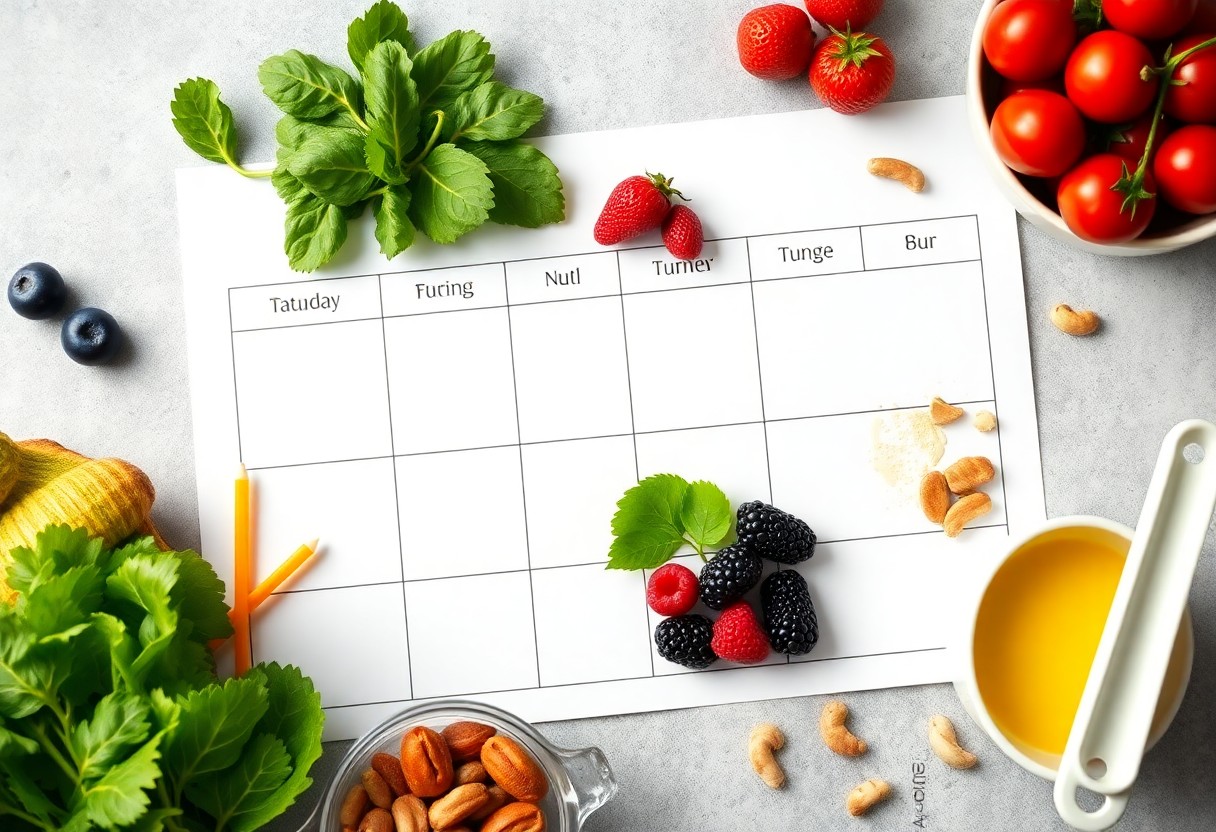
Staying on Track
Despite the challenges you may face, staying on track with your anti-inflammatory diet is imperative for achieving your health goals. You can overcome obstacles by planning ahead and staying committed to your menu plan.
Overcoming Cravings
Akin to avoiding temptations, you can overcome cravings by finding healthy alternatives to your favorite foods and keeping them on hand. This will help you stay on track and avoid unhealthy choices.
Maintaining Motivation
The key to maintaining motivation is to celebrate your successes and don’t be too hard on yourself if you slips up. You can track your progress and set small goals to help you stay motivated and focused on your health goals.
Another way to maintain motivation is to find a support system, such as a friend or family member, who can help you stay accountable and motivated. By staying positive and focused, you can overcome any obstacles and achieve your health goals, which is very important for your overall well-being and long-term health.
To wrap up
From above, you now have a comprehensive template for planning an anti-inflammatory weekly menu. You can use this guide to create your own personalized meal plans, helping you make informed decisions about your diet. By following this template, you will be able to reduce inflammation and improve your overall health, allowing you to take control of your well-being and make positive changes to your lifestyle, with your dietary choices supporting your long-term health goals.
FAQ
Q: What is the purpose of a template for planning an anti-inflammatory weekly menu?
A: The purpose of a template for planning an anti-inflammatory weekly menu is to help individuals plan and organize their meals in a way that reduces inflammation in the body. This can be especially helpful for people who suffer from chronic inflammatory conditions, such as arthritis or digestive issues. By planning out meals in advance, individuals can ensure they are getting the nutrients they need to reduce inflammation and promote overall health and well-being.
Q: What types of foods should be included in an anti-inflammatory weekly menu?
A: An anti-inflammatory weekly menu should include a variety of whole, unprocessed foods such as fruits, vegetables, whole grains, lean proteins, and healthy fats. Foods that are high in antioxidants, omega-3 fatty acids, and fiber are particularly beneficial for reducing inflammation. Examples of anti-inflammatory foods include fatty fish, turmeric, ginger, citrus fruits, and leafy greens. It’s also important to limit or avoid pro-inflammatory foods such as sugary drinks, processed meats, and refined carbohydrates.
Q: How can I customize a template for planning an anti-inflammatory weekly menu to suit my individual needs?
A: To customize a template for planning an anti-inflammatory weekly menu, start by considering your dietary restrictions, preferences, and health goals. For example, if you are vegetarian or vegan, you’ll want to focus on plant-based protein sources and avoid animal products. If you have a food allergy or intolerance, be sure to avoid those foods in your meal plan. You can also adjust the portion sizes and ingredients based on your personal calorie needs and lifestyle. Additionally, you can incorporate your favorite foods and recipes into the template to make it more enjoyable and sustainable.
Q: What are some tips for sticking to an anti-inflammatory weekly menu plan?
A: To stick to an anti-inflammatory weekly menu plan, start by setting realistic goals and expectations. Begin by planning out your meals for the next few days or a week, and make a grocery list to ensure you have all the necessary ingredients. Prep as much as you can in advance, such as chopping vegetables or cooking proteins, to make mealtime easier and faster. It’s also helpful to keep healthy snacks on hand to avoid relying on convenience or processed foods. Finally, be flexible and don’t be too hard on yourself if you slip up – simply get back on track and keep moving forward.
Q: Can I use a template for planning an anti-inflammatory weekly menu if I have a busy schedule or limited cooking experience?
A: Yes, you can still use a template for planning an anti-inflammatory weekly menu even if you have a busy schedule or limited cooking experience. Look for templates that include simple and quick recipes, or that provide suggestions for meals that can be prepared in advance. You can also consider using a meal delivery service or pre-prepped ingredients to make cooking easier and faster. Additionally, many templates include tips and resources for cooking on a budget or with limited time, so be sure to take advantage of those. With a little creativity and flexibility, you can still achieve your health goals even with a busy schedule or limited cooking experience.


